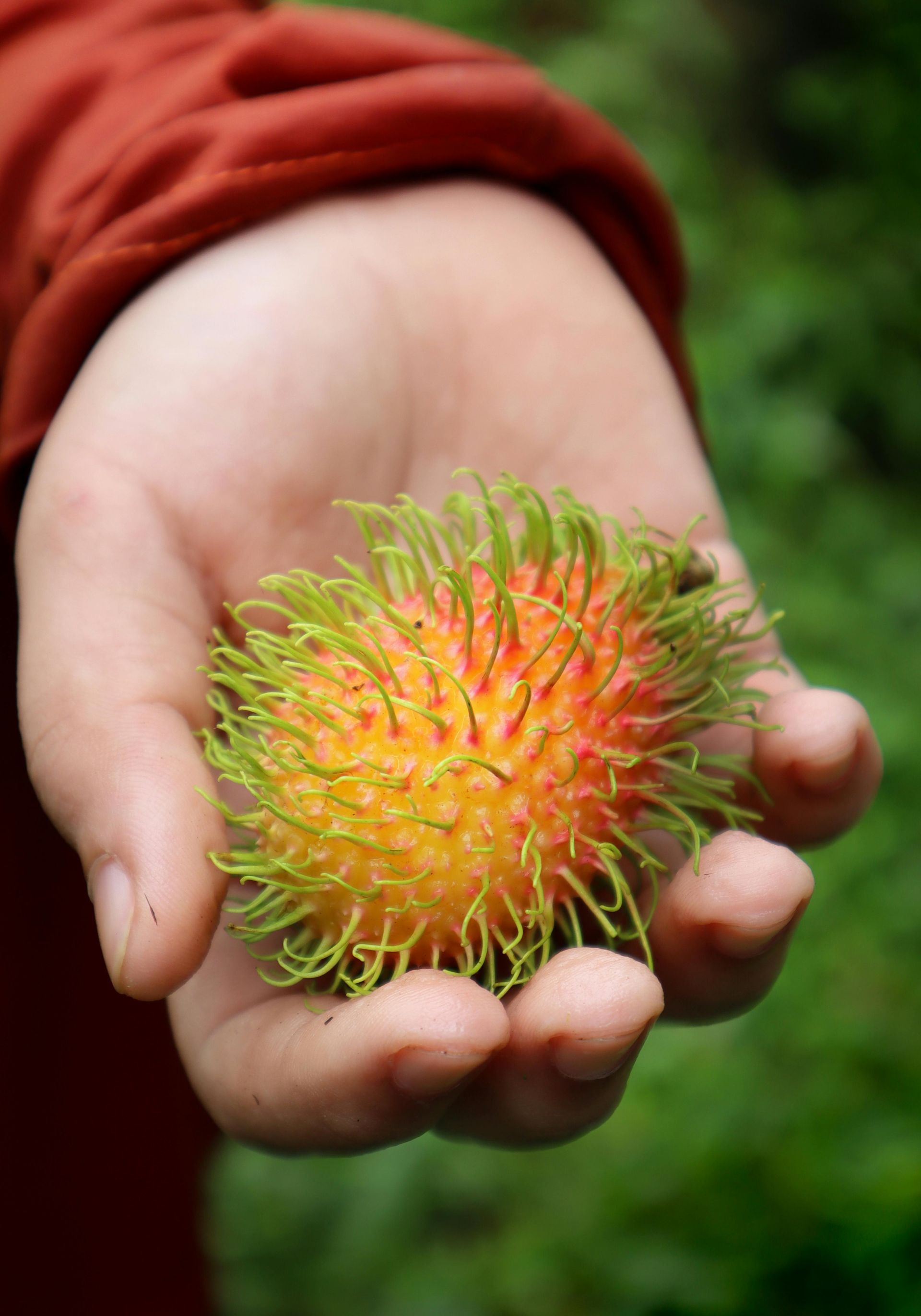How To Grow Rambutan
How to Grow a Rambutan Tree: A Complete Guide
Rambutan trees produce unique, spiky red fruit with a sweet, juicy taste. Native to tropical regions, these trees thrive in warm, humid environments and can grow successfully in climates similar to their natural habitat. Here’s how to grow a rambutan tree step-by-step.
1. Getting to Know Rambutan Trees
Rambutan trees (Nephelium lappaceum) are part of the lychee family and can grow up to 80 feet tall in their natural environment, though they are often kept smaller when cultivated. They grow best in tropical or subtropical climates, where the temperatures are warm and there’s plenty of moisture. Rambutan trees may take around 5-6 years to bear fruit when grown from seed, but they’ll often fruit sooner if grown from grafted plants.
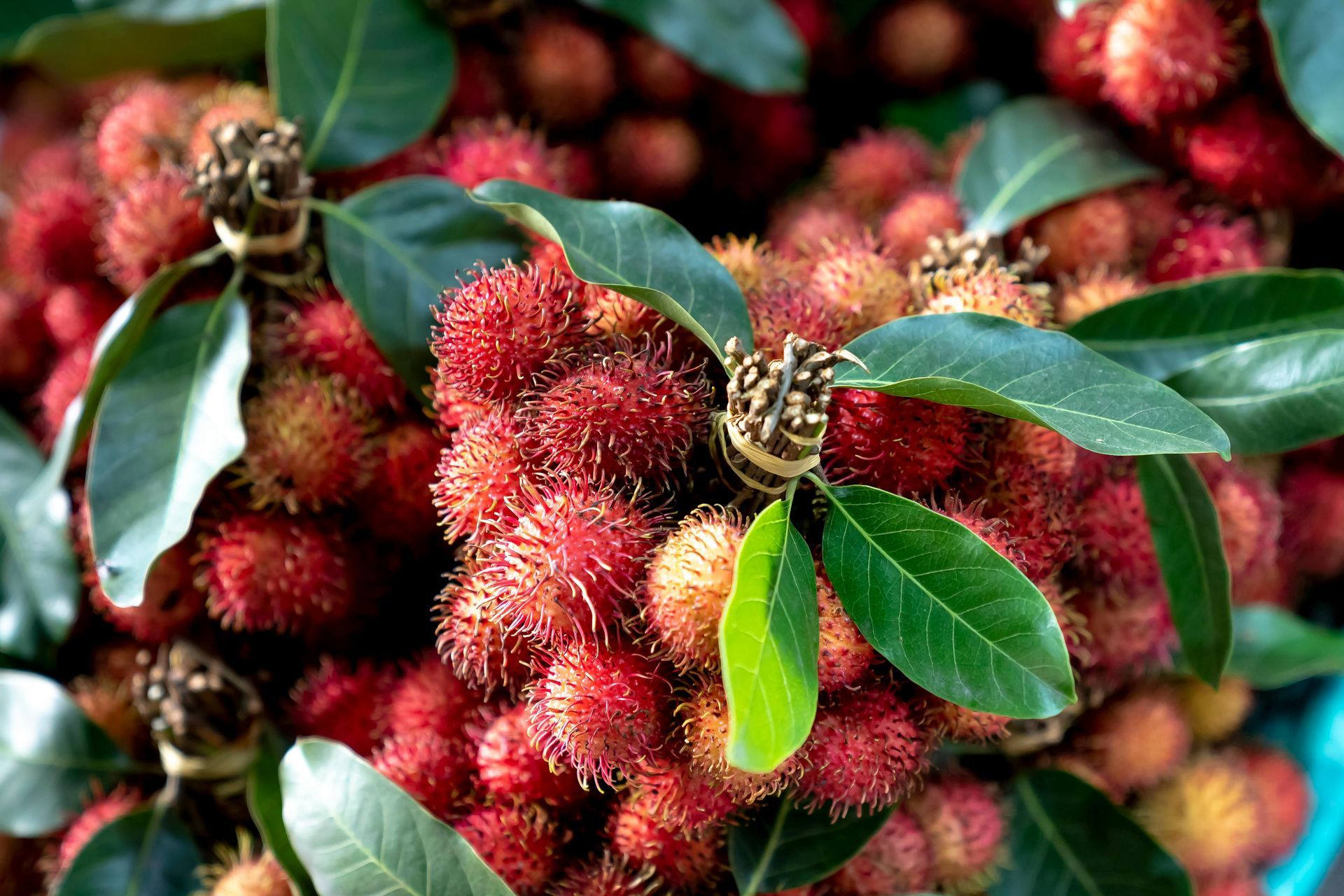
2. Choosing a Variety and Propagation Method
Before planting, decide which variety of rambutan you’d like and consider how you want to start your tree.
Common Varieties: There are a few varieties of rambutan, and each one has slightly different fruit characteristics. ‘R167’ and ‘R162’ are popular varieties that grow well in warm, tropical climates.
Growing from Seed vs. Grafting: Rambutan trees can be grown from seeds, but they’ll take longer to bear fruit. Grafted plants produce fruit faster and are often hardier.
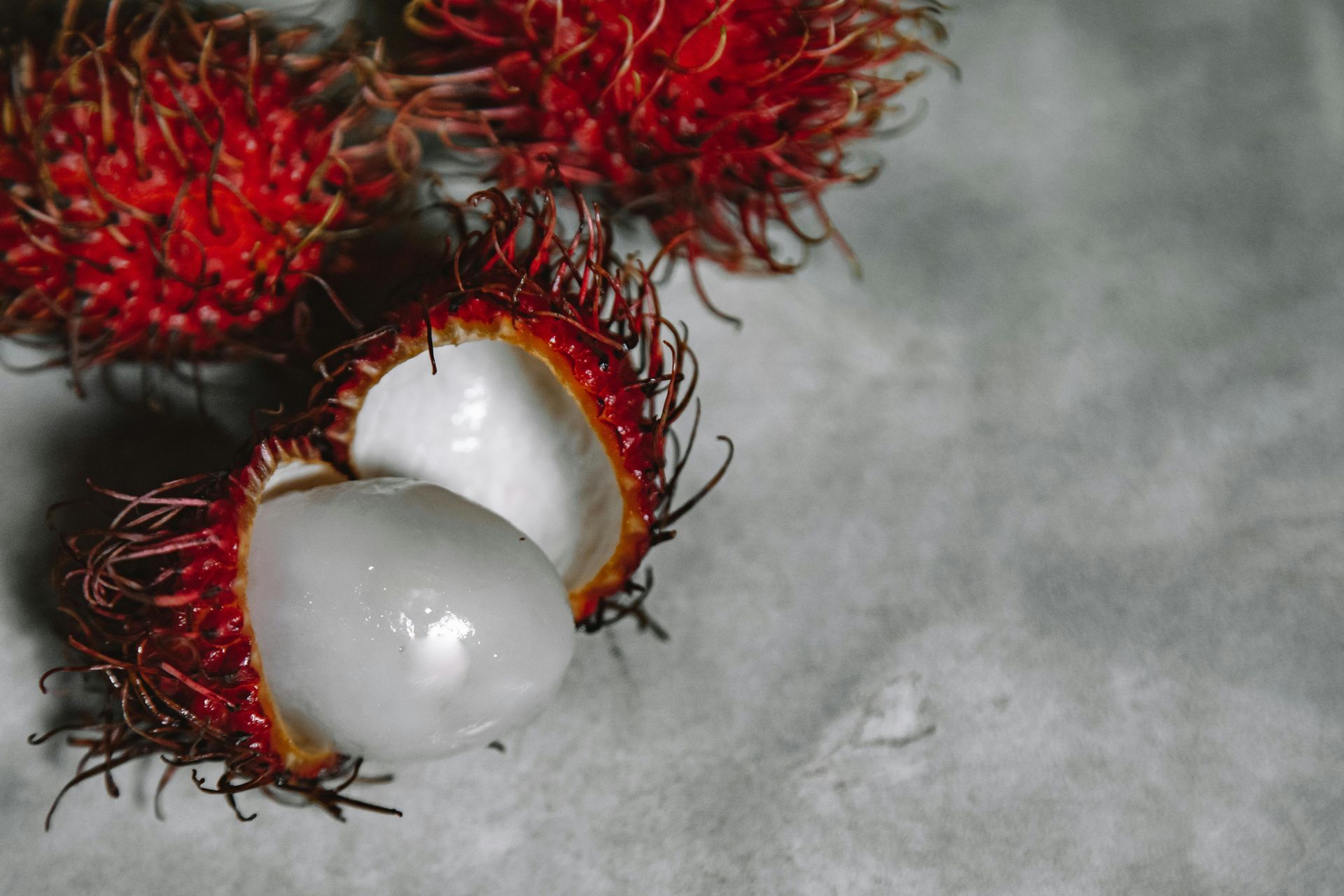
3. Picking the Perfect Location
Rambutan trees need specific conditions to thrive, so choose the location carefully:
Sunlight: Rambutan trees prefer full sunlight for at least 6-8 hours a day. They’ll need as much direct sunlight as possible to grow strong and produce fruit.
Soil Requirements: Rambutans grow best in rich, well-draining soil with a slightly acidic pH (5.5–6.5). Adding organic matter like compost can improve soil quality.
Spacing: Plant rambutan trees 25-30 feet apart if you’re growing more than one to give their root systems enough space to spread.
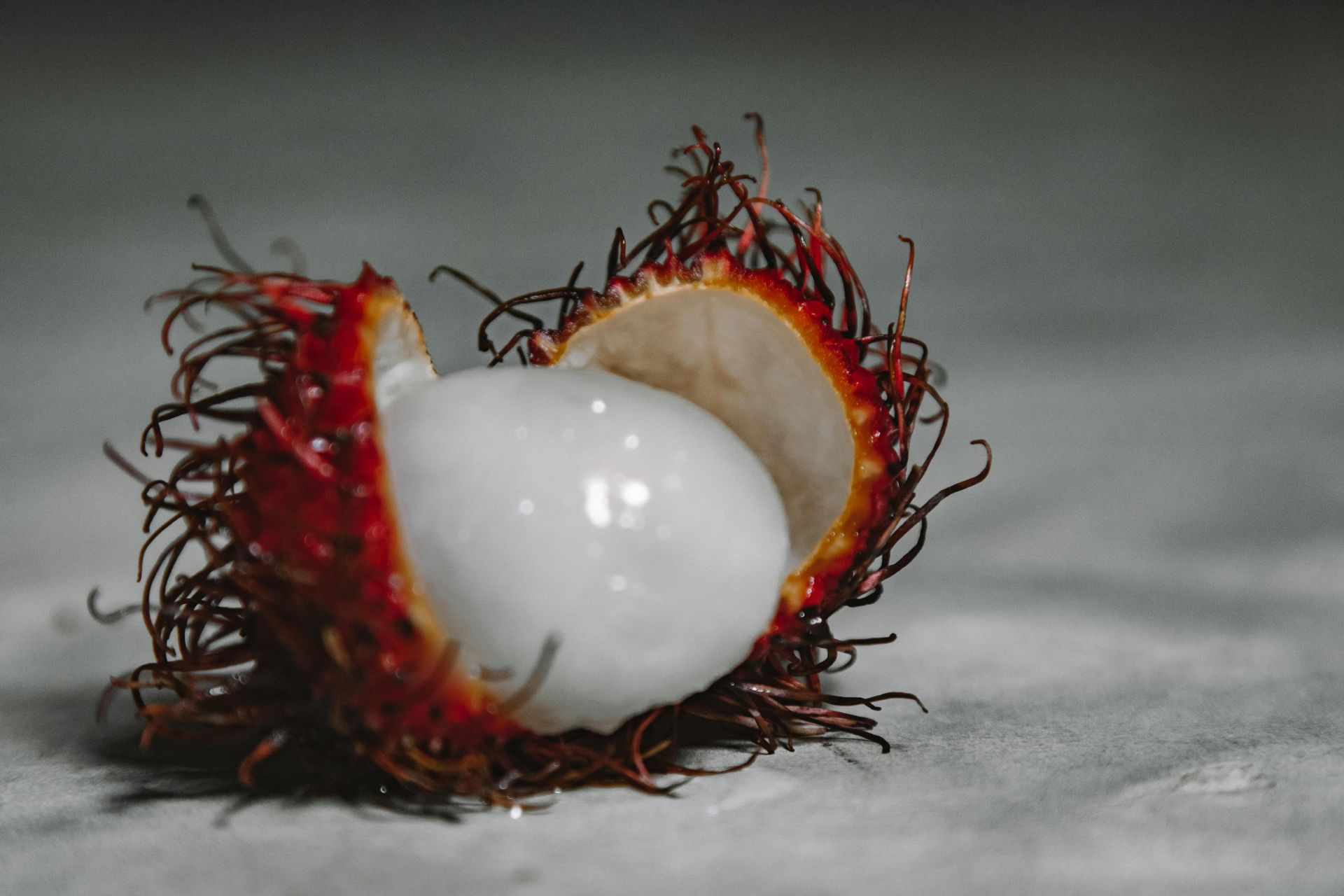
4. Planting the Tree
Once you have the right spot, follow these steps to plant your rambutan tree:
Dig the Hole: Prepare a hole that’s twice as wide and just as deep as the tree’s root ball.
Planting: Place the tree in the hole, ensuring it’s straight, then fill the hole with soil, pressing down gently to secure it.
Watering: Water the tree thoroughly after planting. Rambutans love moist soil, so make sure the root area is well-hydrated.
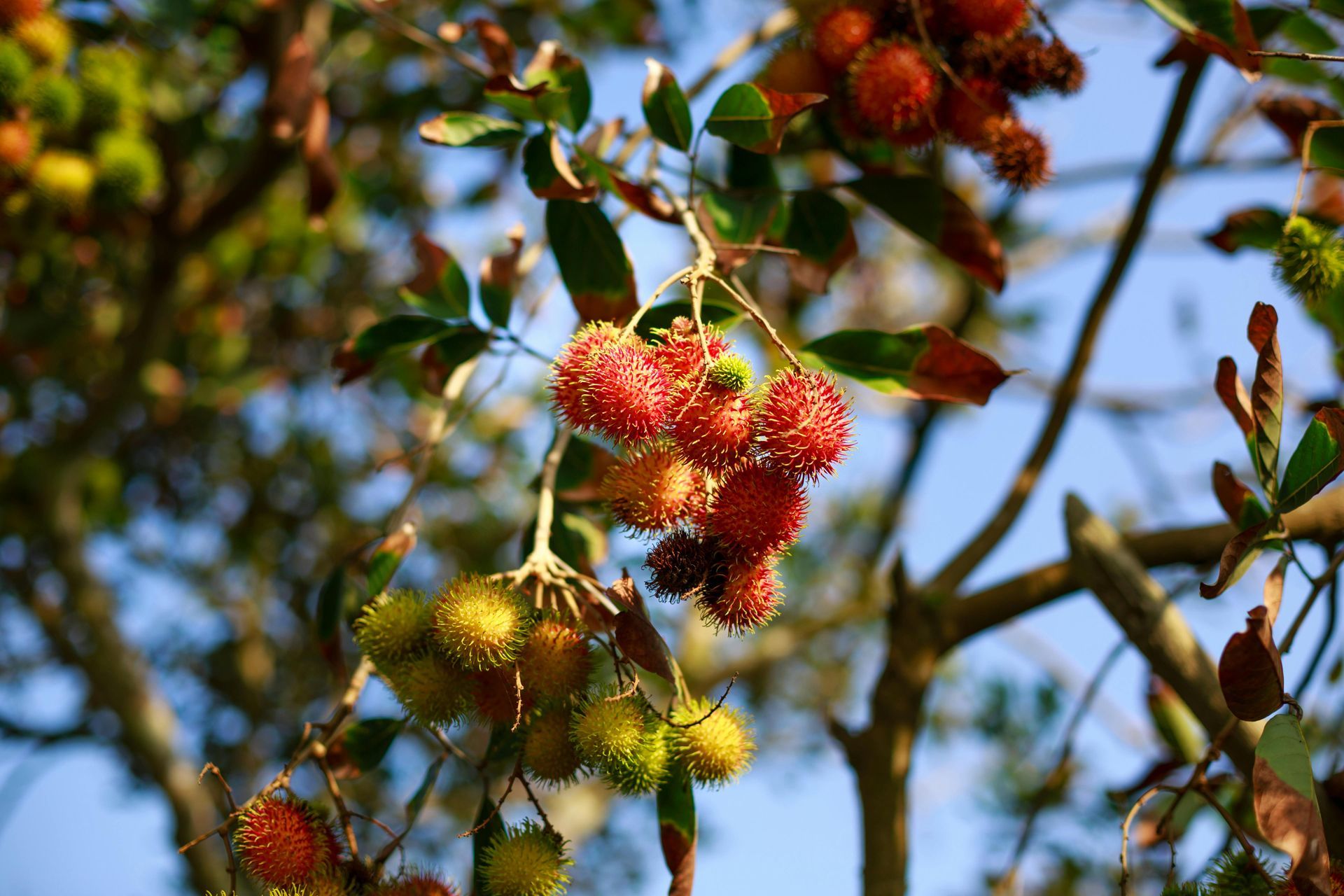
5. Caring for Your Rambutan Tree
Rambutan trees need regular care to stay healthy and bear fruit. Here’s what they need:
Watering: Keep the soil consistently moist, especially during dry periods. Rambutan trees prefer high humidity and can suffer if the soil dries out completely.
Fertilizing: Use a balanced fertilizer every 3-4 months, especially in the growing season. Adding compost or organic fertilizer can also enrich the soil.
Mulching: Apply mulch around the base of the tree to retain soil moisture, reduce weed growth, and keep the roots cool. Avoid placing mulch directly against the trunk to prevent rot.
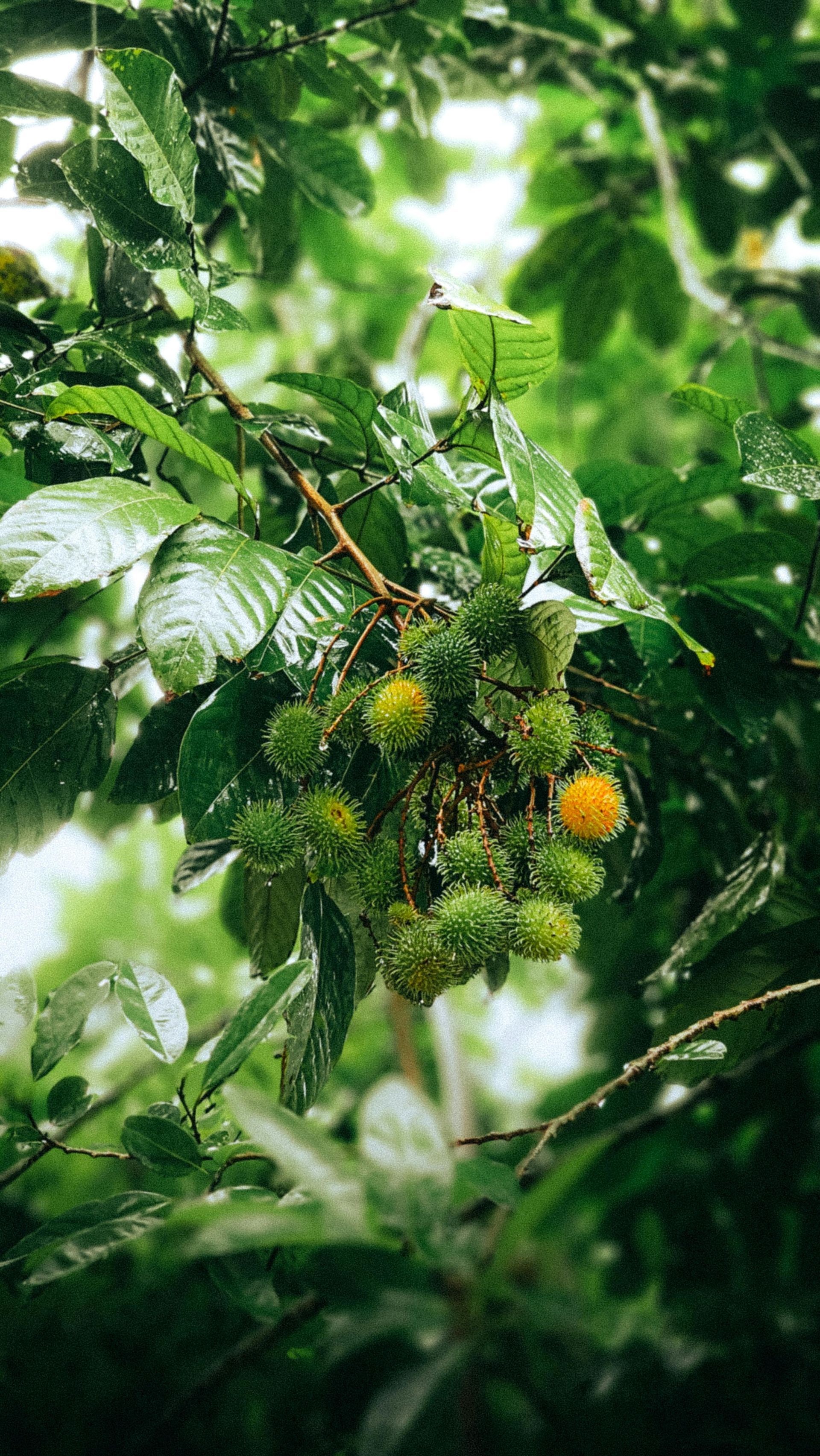
6. Pruning for Growth and Health
Regular pruning helps rambutan trees stay healthy and manageable.
Shaping the Tree: Prune young trees to shape their growth, encouraging a strong central trunk and open branches. This helps with sunlight penetration and makes harvesting easier.
Removing Deadwood: Trim away any dead, damaged, or diseased branches to improve airflow and reduce disease risk. Rambutan trees can also benefit from a light pruning after the fruiting season to encourage new growth.

7. Dealing with Pests and Diseases
Rambutan trees are generally hardy, but they can face some pest and disease issues. Here’s how to manage them:
Pests: Common pests include aphids, mealybugs, and fruit borers. Neem oil or organic insecticidal soap can help keep these pests in check.
Diseases: Fungal diseases, especially in humid climates, can be an issue. To prevent these, make sure the tree has good airflow, avoid overwatering, and prune regularly.

8. When to Expect Fruit and Harvesting
Rambutan trees can take a few years to bear fruit, but the wait is worth it for this delicious fruit.
Fruiting Time: Rambutan trees typically produce fruit after 5-6 years if grown from seed. Grafted trees may bear fruit in 2-3 years.
Harvesting: Rambutans are ready to pick when the skin turns red or yellow (depending on the variety) and feels firm. Gently twist the fruit off the branches to avoid damaging the tree.
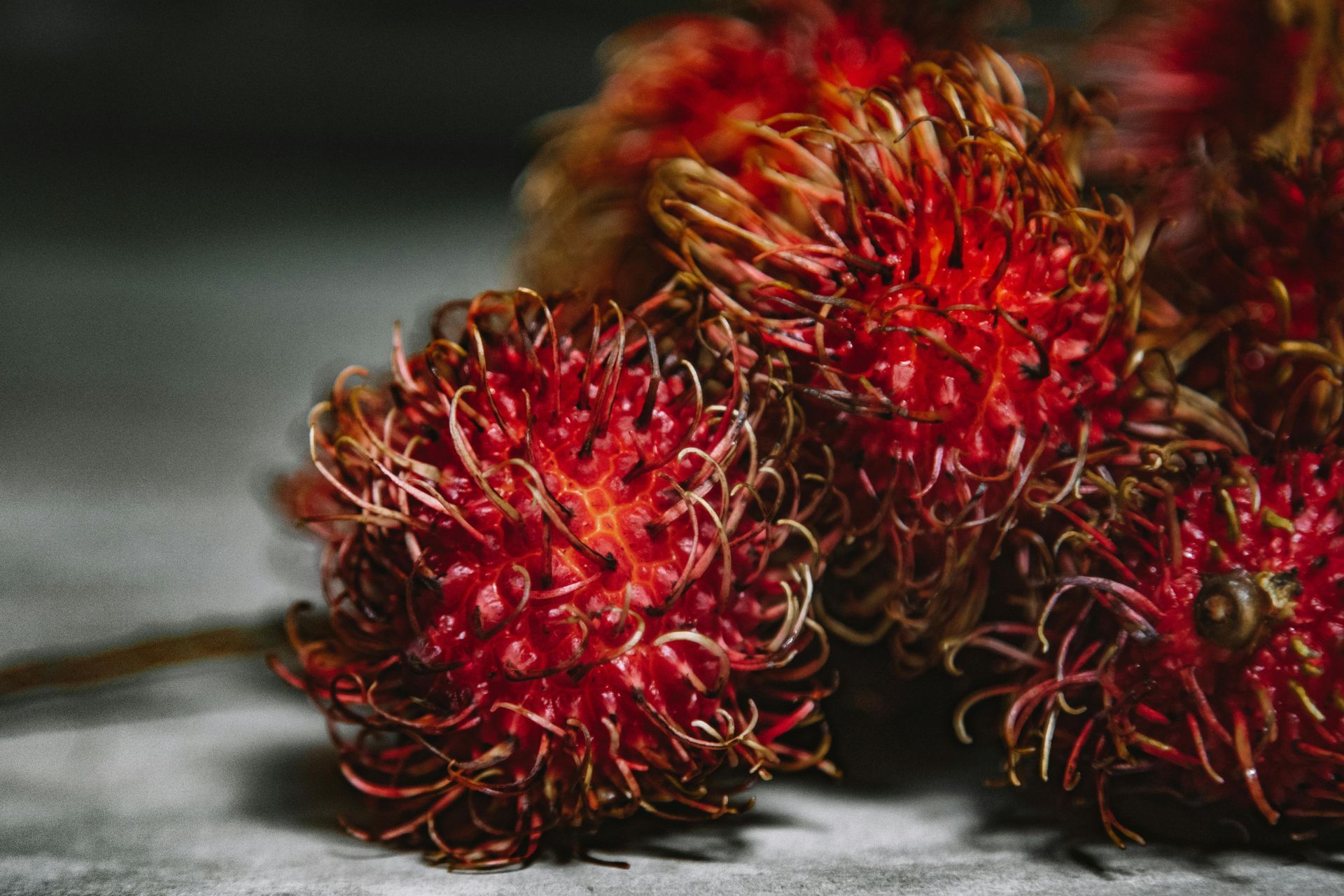
9. Enjoying Your Rambutan Harvest
Rambutans are best enjoyed fresh but can also be used in various recipes.
Eating Fresh: Peel the outer skin, remove the pit, and enjoy the juicy flesh. Rambutans are perfect for snacking or adding to fruit salads.
Recipes: Rambutans can be added to smoothies, desserts, or even savory dishes for a tropical twist.
Storage: Fresh rambutans can last up to a week in the refrigerator. For longer storage, freeze the peeled fruit.
Conclusion
Growing a rambutan tree takes some time, but it’s a rewarding experience, especially when you start to harvest the unique, delicious fruit. With the right care, regular watering, and consistent maintenance, your rambutan tree will grow strong and provide you with fresh rambutans year after year.
